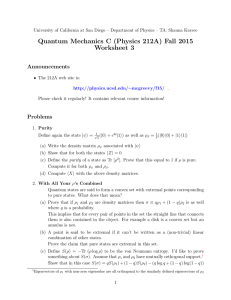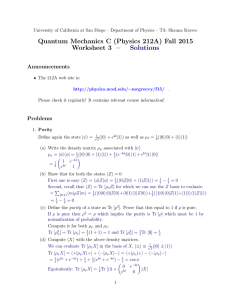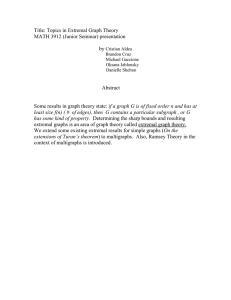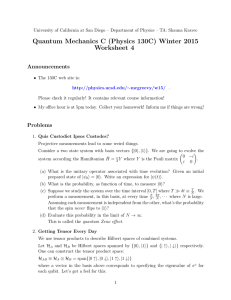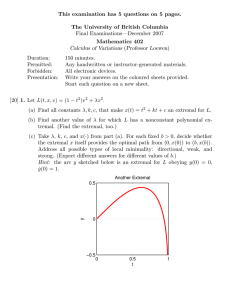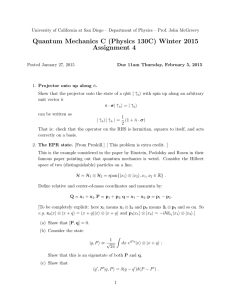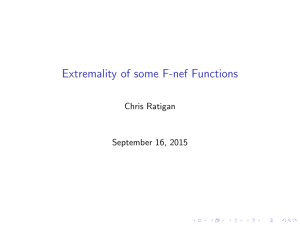Quantum Mechanics C (Physics 130C) Winter 2015 Worksheet 6 Announcements
advertisement
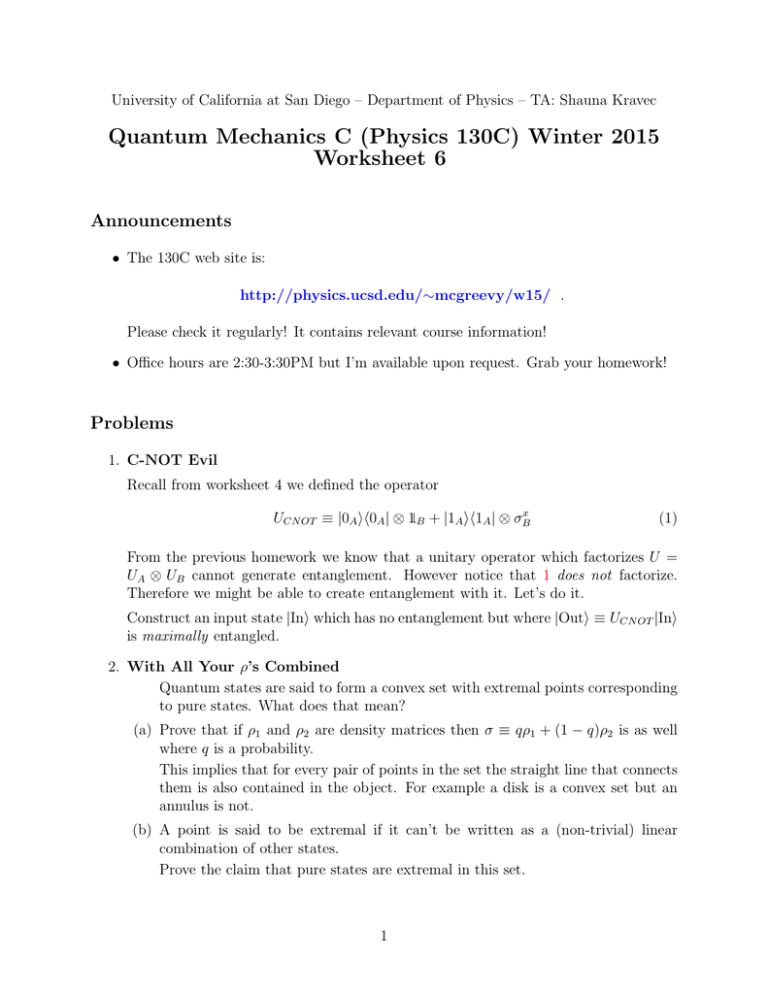
University of California at San Diego – Department of Physics – TA: Shauna Kravec Quantum Mechanics C (Physics 130C) Winter 2015 Worksheet 6 Announcements • The 130C web site is: http://physics.ucsd.edu/∼mcgreevy/w15/ . Please check it regularly! It contains relevant course information! • Office hours are 2:30-3:30PM but I’m available upon request. Grab your homework! Problems 1. C-NOT Evil Recall from worksheet 4 we defined the operator UCN OT ≡ |0A ih0A | ⊗ 1 B + |1A ih1A | ⊗ σBx (1) From the previous homework we know that a unitary operator which factorizes U = UA ⊗ UB cannot generate entanglement. However notice that 1 does not factorize. Therefore we might be able to create entanglement with it. Let’s do it. Construct an input state |Ini which has no entanglement but where |Outi ≡ UCN OT |Ini is maximally entangled. 2. With All Your ρ’s Combined Quantum states are said to form a convex set with extremal points corresponding to pure states. What does that mean? (a) Prove that if ρ1 and ρ2 are density matrices then σ ≡ qρ1 + (1 − q)ρ2 is as well where q is a probability. This implies that for every pair of points in the set the straight line that connects them is also contained in the object. For example a disk is a convex set but an annulus is not. (b) A point is said to be extremal if it can’t be written as a (non-trivial) linear combination of other states. Prove the claim that pure states are extremal in this set. 1 (c) Define S(ρ) = −Tr (ρ log ρ) to be the von Neumann entropy. I’d like to prove something about S(σ). Assume that ρ1 and ρ2 have mutually orthogonal support.1 Show that in this case S(σ) = qS(ρ1 ) + (1 − q)S(ρ2 ) − (q log q + (1 − q) log(1 − q)) 1 Eigenvectors of ρ1 with non-zero eigenvalue are all orthogonal to the similarly defined eigenvectors of ρ2 2
